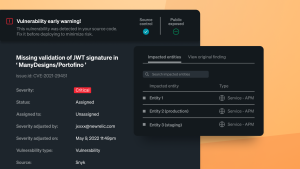It goes without saying that software is at the heart of so many businesses today. But harnessing the power of that software and driving transformation is no easy feat. In fact, in a global survey of IT decision makers, 26% of UK respondents shared concerns that their digital transformations have fallen short of expectations.
True observability—having all of the data and context you need to move faster and build better digital experiences—can help quell these concerns as it allows engineers to be on the offence rather than defence when developing software, so they can take a proactive approach and stay one step ahead of the competition.
Today, I’m thrilled to gather with many of Europe’s leading businesses at FutureStack London to hear about cutting-edge experiences and lessons learned for creating more perfect software. Digital leaders from Domino’s Pizza, Elsevier, Gett, ITV, Metapack, News UK, Tandem Bank, Wix, and more will showcase their experiences using observability to drive transformation and improve their customers’ digital experiences.
And we’ll also have a chance to dive deep into some major updates from New Relic, which recently introduced the industry’s first observability platform that is open, connected, and programmable. New Relic One gives customers and partners the ability to build entirely new applications on top of the platform, and integrate their business data to drive real-time, actionable insights.
Ken Gavranovic from our product organization will discuss the challenges with building software today, including the huge amount of data being stored in so many different places and formats. Observability is about getting visibility and collecting telemetry data in four forms: metrics, events, logs, and traces, and there’s no better way to achieve true observability than via a single platform rather than a collection of disparate tools. How can you improve your service and really understand the problems you may have with your software? How can engineers and their managers get the data they need and prioritise projects accordingly? In his presentation, Ken will address these questions and more.
It’s easier said than done for software teams to constantly be on the offence—we know engineers have a lot on their plates, and the more complex the software becomes, the harder it is to keep pace. But with an observability platform for all critical data, everyone can be on the same page about what needs doing across applications, services, and systems. Furthermore, teams can apply artificial intelligence and automation technologies that seamlessly fit into their unique business processes to optimise their software faster and deliver better customer experiences.
The possibilities feel endless with all of the latest capabilities of New Relic’s observability platform, and I can’t wait to see how European customers innovate with us to create more perfect software than ever before.
The views expressed on this blog are those of the author and do not necessarily reflect the views of New Relic. Any solutions offered by the author are environment-specific and not part of the commercial solutions or support offered by New Relic. Please join us exclusively at the Explorers Hub (discuss.newrelic.com) for questions and support related to this blog post. This blog may contain links to content on third-party sites. By providing such links, New Relic does not adopt, guarantee, approve or endorse the information, views or products available on such sites.



